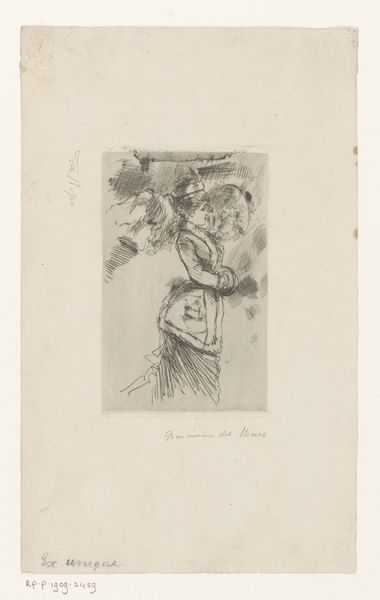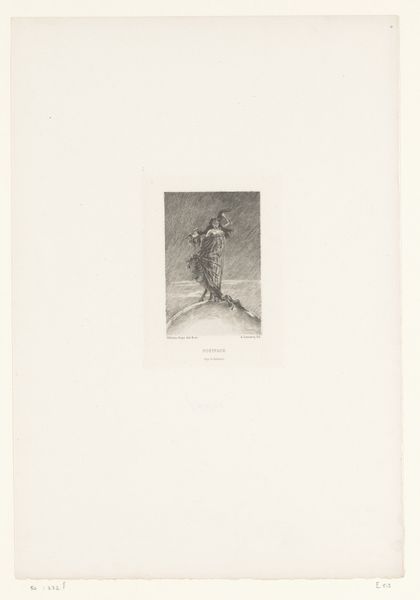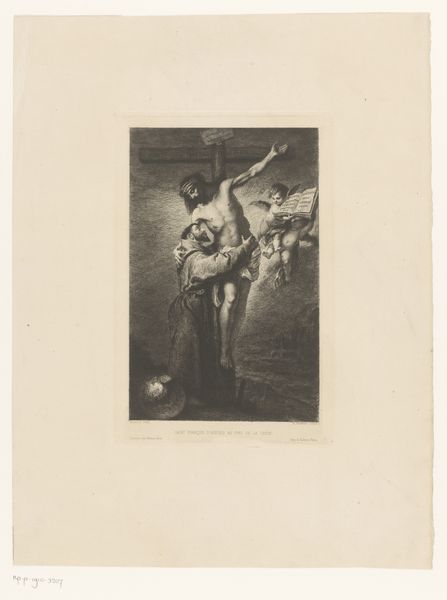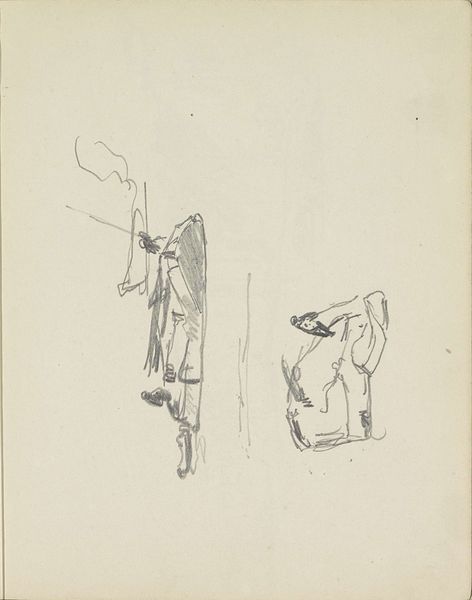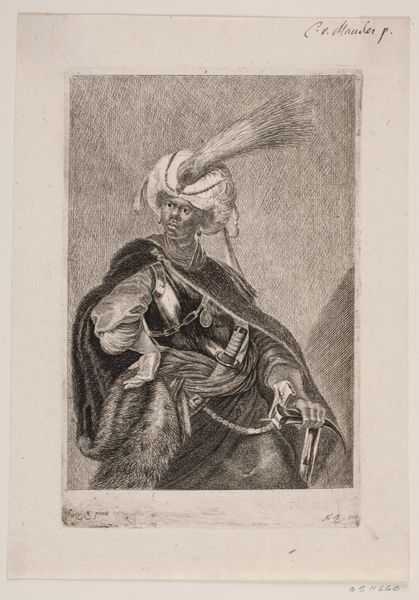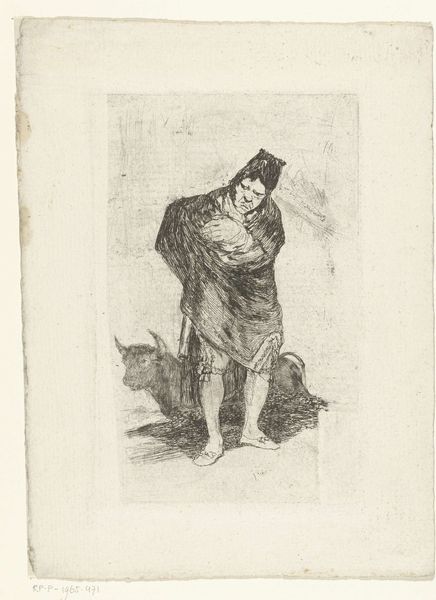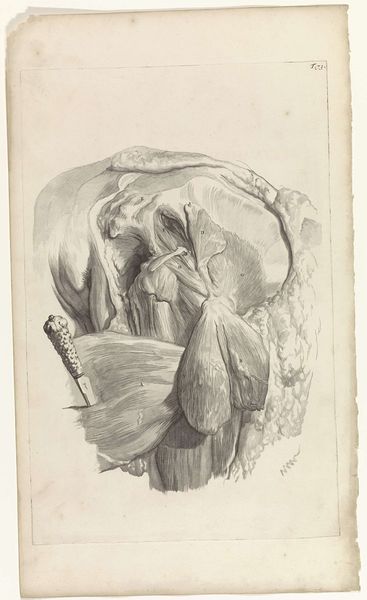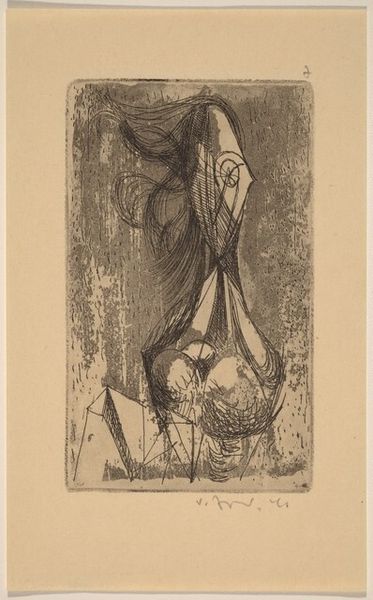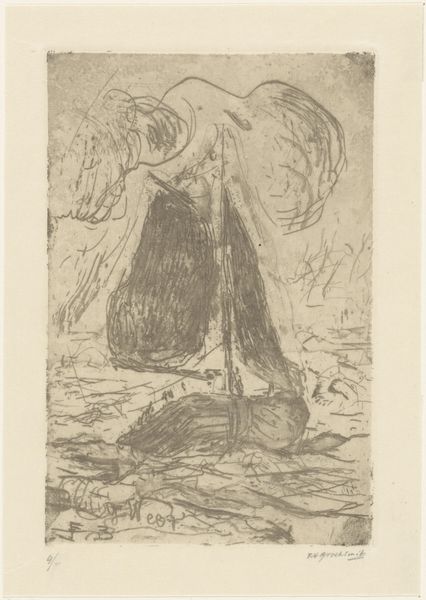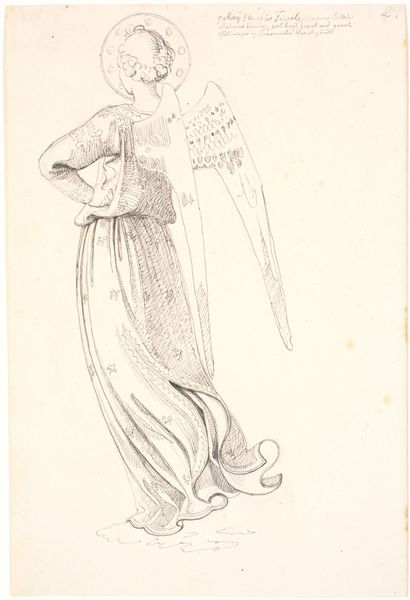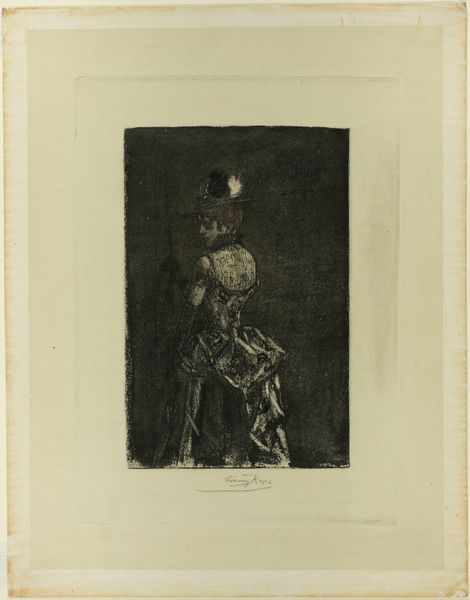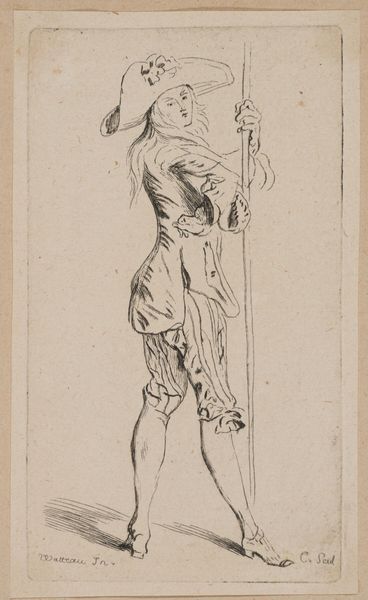
print, etching, intaglio, paper
# print
#
etching
#
intaglio
#
asian-art
#
figuration
#
paper
Dimensions: height 178 mm, width 138 mm
Copyright: Rijks Museum: Open Domain
Adriaan Pit created this etching of a Japanese goddess. The image is made through a labor-intensive printing process. A metal plate, likely copper or zinc, would have been meticulously inscribed with lines, using sharp tools to create the composition, then dipped in acid to create a permanent image that would hold ink. The act of printing transforms the drawing from something intimate to something that can be reproduced, and widely distributed. Each print involves inking the plate, carefully positioning paper over it, and applying immense pressure to transfer the image. This process gives the print its characteristic embossed edges. The hazy rendering gives the image a soft, spiritual quality, like a faded memory or a dream. By choosing printmaking, Pit democratized the image of the statue, making it accessible to a wider audience, and questioning the divisions between art, craft, and industry. It is a fascinating example of how the means of production can imbue an image with social and cultural significance.
Comments
No comments
Be the first to comment and join the conversation on the ultimate creative platform.
